The following text has been extracted from Digital Esoterism Master thesis, produced within the Social Design Department of Design Academy Eindhoven, 2021.
This text will follow the structure of a well-known Tarot spread: the Celtic Cross. This arrangement is made up of ten positions. Each position unveils a different aspect of a situation, and whilst reading may seem disconnected from the others. Yet, it is quite important to read every position as it is, one by one, as you would do with Tarots. As in Tarots, a card by itself doesn’t really mean anything, but when put next to the others it becomes part of a scheme –– almost a path.
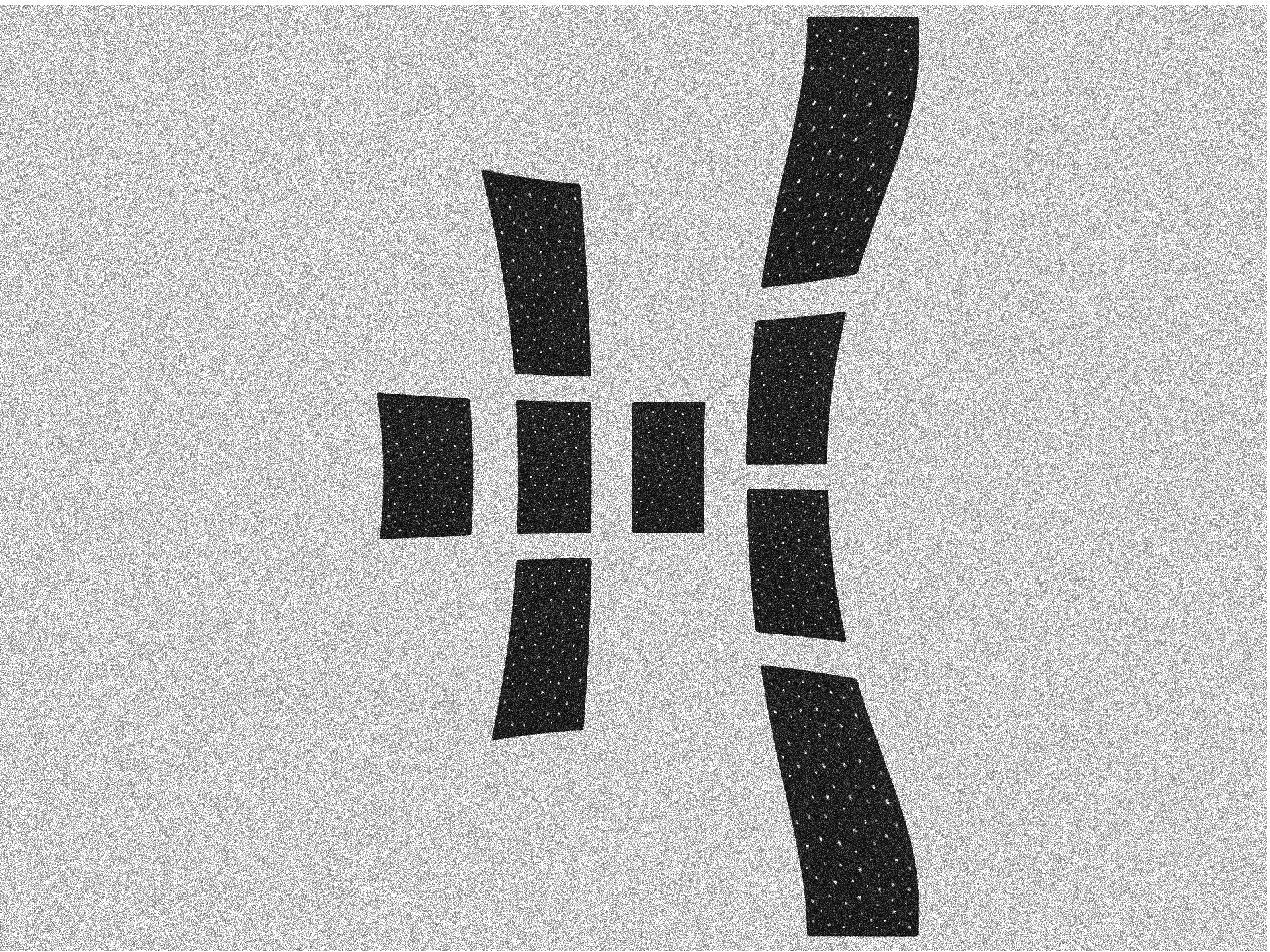 The representation of a traditional Celtic Cross Tarot spread, which has been used to structure this text.
The representation of a traditional Celtic Cross Tarot spread, which has been used to structure this text.
0. WHAT WOULD YOU LIKE TO ASK?
I was born in an Italian family, rooted for centuries in the Lazio region, and deeply influenced by Catholic beliefs. My mother is a doctor, a woman of science, yet the strongest memories I have of her are the ones in which she is praying –– doing a fioretto –– or throwing salt three times behind her shoulders whilst reciting a short phrase against bad luck.
Sale, sale che scongiura porta via la jettatura (x3)
 “Salt, salt who wards, take away this curse”. In Italy salt is believed to have many protective qualities against curses, or malocchio, the evil eye.
“Salt, salt who wards, take away this curse”. In Italy salt is believed to have many protective qualities against curses, or malocchio, the evil eye.
My father could also be defined as a man of science; he is a psychologist and an atheist, he doesn’t believe in anything the I-Ching to gain insight on a specific question he had. Sweeping through the books in my former house, I found many post-its with drawings of hexagrams. I challenged myself in trying to understand the type of question that generated them. If there is anything I gathered from the experience of these two people in my life, it is that reality has multiple entry points. The accessibility and DIY-ness that magic entails, made me not only curious to find out how to apply it myself, but also feel safe in the pursuit of it.
Three years ago I started reading Tarots. The cards were the same as those that I used to play with my grandmother, in the long summers I spent at her countryside house. I felt confident –– already knowing the images –– it seemed easy to just memorise them and play. I had a manual, written by who-knows-who that was training me. I studied for about a year, until I felt confident enough to read someone’s cards.
Once, I was reading Tarots to a friend of mine. The reading came out to be very negative for her, and I couldn’t do anything about it. I was using the deck to give arbitrary answers to this person, instead of allowing her to get to know herself better.
I was basically deciding her future.
This realization came with the feeling of a cold wind coming across me. There were twenty seconds of silence weighing on the room, along with my friend’s understandable perplexity.
-What’s wrong?
-I think we should end this session. I am doing it wrong, we shouldn’t continue.
I stopped reading Tarots for almost 8 months until I decided the topic of this thesis was going to be about magic, especially divination, and how it shapes our notion of the future. I was still extremely drawn to it and wanted to find out more. I laid the cards on my bed one morning, asking if it was okay for me to use them. Could we mend our relationship? The answer was yes, but to one condition: I had to make them into something new.
I. THE SITUATION
Indication on the present ongoing situation, what the querent is living at the moment, can even describe the querent themselves.
 John William Waterhouse - The Crystal Ball, 1902 (oil on canvas)
John William Waterhouse - The Crystal Ball, 1902 (oil on canvas)
Whether you position the future in front of you or behind you, whether you believe in destiny, coincidence or combinations of the above, the future is a world that was built by you and for you. It’s in fact a reality that doesn’t exist less than an immediate one, but it’s filled with the projections of an uncertain present. That is the main reason why the future changes with us; it’s not really our actions that shape the future, but rather the way we envision it. In general, people are not particularly capable of thinking about the future.
One typical way to envision the future is through unrealistic optimism –– which tends to sugarcoat the reasonability of future outcomes, hence theoretically delegitimizing disastrous scenarios. A parallel, but almost opposite method is to take the path of conscious ignorance, blindly stepping into whatever comes and dealing with it. Finally, the fatalist approach for which the future just is, and no matter their actions, they will have no power to influence future outcomes. Still, even when we force ourselves not to imagine it, we are taking for granted a sort of favorableness. In other words, we are still creating an image of it. This mechanism can be defined as a need for cognitive closure. Since we could go on indefinitely elaborating the information we have into hypotheses, at some point the desire for a definite answer defeats the ambiguity of not knowing. Even the most speculative, odd, uncanny version of a future becomes a valuable answer to the absurdity of an unpredictable one.
II. WHAT CROSSES
It describes what is causing conflict in the situation, the obstacles in the present. It’s neither positive nor negative, it just reflects objective facts for one to measure against.
An exploration of the future is not only an imaginative process, but it’s a scanning of present conditions. No individual will have the same vision of the future because of the intricate social, political, cultural and technological system that each one lives in a different way. The future one can imagine is the product of the synchronicity of the moment in which it happens, and the conditions that generated it. The craft-making skills to repurpose the present into the future can’t overcome the limits of the present. One can only imagine to a certain extent. This comes as no surprise when belonging to marginalized groups, whose future was denied and slowly made invisible. PoC, womxn, trans, queer, indigenous, non-conforming know how dangerous it can be to live a present that only has one direction. As futurist Anab Jain discusses, other worlds are possible, but humans tend to catalyze them to give order. The need to give a definite answer to uncertainty prevails, and it results in the reduction of all other worlds into one:
The possibility of sitting with the discomfort of uncertainty and being open to multiple views of the world is difficult. Our prospective brains are not quite trained to maintain multiple worlds and views when simultaneously being forcefully told by all media possible what we should see, hear and believe. But, we all know, very well, the dangers of a singular narrative. Modernism was essentially an unquestioning pursuit of a ‘better future ‘ — and that is perhaps the reason we are in this situation.
Is it different worlds that simultaneously want to exist, and keep fighting between each other? Can they be separated? On Internationale’s glossary of Common Knowledge international curators and theoreticians of contemporary art discuss the term “temporalities” as these worlds co-existing:
“There are two completely separate temporalities: that of the master,“modern time”, and subaltern temporality: primitive, popular, indigenous, usually identified with the past, and ready to be expropriated or abolished on behalf of the idea of progress and civilization. This dual temporality is nothing but an interesting projection from a colonial power, which has been very successful in reproducing patronising forms of representing the others.”
According to the authors, modern temporality is fundamentally an operation of subtraction of other temporalities, mostly related to the past, that was abolished and condemned on behalf of progress. One would argue to be much more complex to divide temporalities because of their entanglement, both in narration and production. It may look like a clear distinction, but it’s more the tension between them that sometimes offers a glimpse of their blurry overlapping borders.
In his essay “Of Other Spaces,” Michel Foucault recognises this tension in spaces that he calls ‘heterochronic’. Heterochronias,“such as museums enclose in one place objects from all times and styles. They exist in time but also exist outside of time because they are built and preserved to be physically insusceptible to time’s ravages”. What Foucault recognizes are places in which time is accumulated, mixed like sugar and water, impossible to discern. Foucault’s reflection is taken up again by French theorist Paul B. Preciado. What we see in museums are multiple times, hence futures, that deserve accumulation and recognition. If the museal times represent the main narration, then Preciado raises the question on what other futures are rejecting the main narrative of time.
Is this main narrative generated by the past or by the imagined future? “The White Man’s Burden”, is a poem by the British Victorian poet Rudyard Kipling, written to exhort the American people to conquer and rule the Philippines. In the poem, he defines white imperialism and colonialism in moral terms, as a burden that the white race must take up to help the non-white races develop civilization.
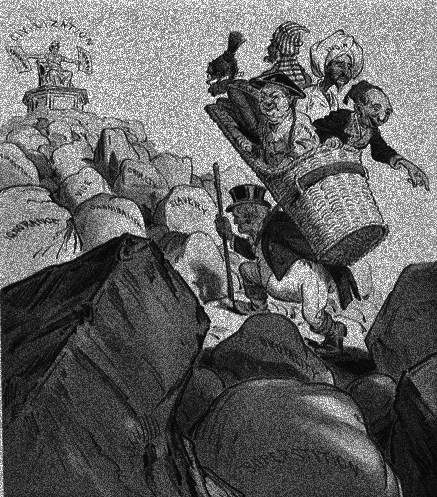 The editorial cartoon “’The White Man’s Burden’(Apologies to Rudyard Kipling)” shows JohnBull (Great Britain) and Uncle Sam (U.S.) delivering the colored people of the world to civilization. (Victor Gillam, Judge magazine, 1 April 1899)
The editorial cartoon “’The White Man’s Burden’(Apologies to Rudyard Kipling)” shows JohnBull (Great Britain) and Uncle Sam (U.S.) delivering the colored people of the world to civilization. (Victor Gillam, Judge magazine, 1 April 1899)
The poem seems like an artistic ex post facto justification of colonial temporality, that determines its choices on an already decided right future. How could we learn from the past, if even history was just written by the future it imagined for itself? According to Nassim Taleb, author of The Black Swan, one should retrieve from theorizing history, especially because of this cul-de-sac phenomenon. As Taleb writes “History is certainly not a place to theorize or derive general knowledge, nor is it meant to help in the future, without some caution. We can get negative confirmation from history, which is invaluable”, Taleb continues “but we get plenty of illusions of knowledge along with it”. What Taleb writes raises a question: Is the future less determined than the past, if it only ever existed in our imagination?
III. WHAT IS BENEATH
It describes conscious or subconscious motivations that represent the roots of the situation. The genesis of present events can indicate what is truly driving the querent.
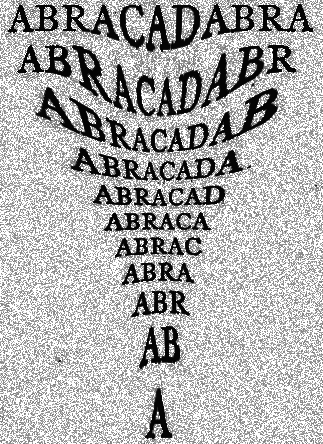 Abracadabra has been popularized by stage magic magicians, but it has a long history of healing and protective powers when inscribed on an amulet.
Abracadabra has been popularized by stage magic magicians, but it has a long history of healing and protective powers when inscribed on an amulet.
Before one could speak about the future, there was fate. Before the affirmation of Plato’s universe of pure ideas, animism served as the framework through which humans looked at the world. In this realm, one’s soul was always at stake. To survive this constant threat, magic was specifically an “intervention aiming to restore the conditions in which both the individual and the world could regain their presence in the chaos of uncertainty and mutually go on with their active and imaginative relationship.” These are the words of Ernesto De Martino, one of the first to study the concept of magic from an anthropological point of view. What made magic a future technology? De Martino argues: “Man has trusted rhythmic celestial repetitions precisely to protect the soft, liable calendar of his heart, and to be able to inscribe the precarious times of his hearts unto the more stable times of the sky,” It is the risk of the ephemeral that moves humans to act according to De Martino. But magic isn’t necessarily fixed in the past. In fact, it is just a way to approach reality, to shape one’s future independently from any prescribed fate. K-HOLE forecasting collective, famous for starting the norm-core trend, discusses magic in contemporary terms. More precisely they talk about Chaos Magic, a historically detached magic that doesn’t need ethnological analysis.
In the report K-HOLE states:
Chaos Magic creates realities which are temporary and subjective. It’s not a tool for changing others — it’s a tool for changing yourself. You opt into whatever belief system you think will help you reach your intended goals: Wall Street’s Confidence Fairy, your Fairy Godmother, or the Church of Agape. Chaos Magic isn’t just believing in The Secret, it’s deciding to believe in The Secret to begin with. Mixing your own Kool-Aid, deciding how strong to make it, knowing when to drink it and when to stop, is Chaos Magic in practice
It’s something that can be experienced by everyone, on different levels, and sometimes unknowingly. If magic is a culturally and socially specific practice as De Martino defined it, Chaos Magic is more an open-source tool for reality making or unmaking. If one would have to summarize what Chaos Magic does in terms of individual authority and independence, one could say that it represents the system of beliefs stripped of its doctrine, leaving only fundamental laws of operation of a realm. K-Hole’s Chaos Magic is a radical DIY that uses reality as the only necessary operating system. Therefore, it is indeed more spread than we would imagine. The requisite is that you choose whatever system of belief you think will help get through things and then act into it, making nonsense into sense.

 A ‘villain-hitter’ puts an hex on Donald Trump, source @dietprada
A ‘villain-hitter’ puts an hex on Donald Trump, source @dietprada
IV. WHAT RESIDES ABOVE
It reflects the querent’s goal, aspiration or best outcome with regards to the situation. It is what the querent is working towards consciously as they attempt to resolve the situation.
What does it feel to live a fated reality? It is sufficient to look at the infamous Oedipus, doomed to sleep with his mother and kill his father, or the more recent “Little Briar Rose” (popularized as Sleeping Beauty), cursed to one day prick her finger on a spindle of a spinning wheel and die. Fate is the autoroute to inescapability.
If the world was governed by forces that you didn’t understand, and you couldn’t complain because everything had to have a sense in gods’ wider drawing, what could you do? Magic, in its being a remedy to reality, provided the tools necessary to cope with unfathomability. Foreseeing the future seemed like the more profitable solution. If changing the future was not possible, at least one could be prepared. Given the assumption that the world was governed by cosmic logic and basic order, the idea of predicting the future was entirely plausible. The only temporal distinction that mattered was between the dimension of deity and man, respectively Aeternitas and Tempus.
 “Tempus et aeternitas doceant”, Time and eternity will tell; from a facade in Hofje, Netherlands.
“Tempus et aeternitas doceant”, Time and eternity will tell; from a facade in Hofje, Netherlands.
For the concept of Aeternitas you could know the past, present, future, with no distinction. To an all-knowing god, all events are accessible, because all events are contemporary. But human beings lived in Tempus, where the present immediately disappears.
In its ontological dimension, the future was not less determined than the past, but only deities could have access to it. Divination offered techniques that allowed glimpses into this already determined future; to find out indications of what was already decided, already scripted. The only true challenge was to observe closely enough to build patterns, understand laws and functions, and then attempt to understand what was going to happen. Divination was the ultimate magic tool to interpret signs from above, a way for mortals to connect to higher beings.
V. IL TAROCCO
 The Magician card, the number I in the Major Arcana, from the Rider-Waite Smith deck, illustrated by Pamela Colman Smith in 1909, for the scholarly mystic Arthur Edward Waite.
The Magician card, the number I in the Major Arcana, from the Rider-Waite Smith deck, illustrated by Pamela Colman Smith in 1909, for the scholarly mystic Arthur Edward Waite.
As argued by Mike Sosteric, in “Sociology of Tarot”, one of the first specimens of Tarot decks was invented for playing cards, illustrating the life of significant Italian families. The cards popularized these families and became instruments in the collapse of feudalism and the legitimization of new systems of social authority. This occurred thanks to the allegorical quality of the images and their plasticity in being modified and adapted to different ideologies. When other social groups were able to add new symbolism to the cards, it provided a fertile ground for a post-feudalist society, but also for attributing new meanings and purposes to them.
Tarots always functioned as a Rorschach, radiating the ideological projections of the group that would appropriate them, starting from the one in which they were born. Around 1780’s, after some versions of the original Italian Visconti-Sforza, Tarots started being popular as an esoteric tool in France with the Tarots des Marseille, the first of a long history of artists’ interpretations. Even if bred by European elite, later on Tarot became a vernacular tool, used by people to reclaim their power, even if on a metaphysical, spiritual level.
For centuries outcast, disempowered, and oppressed communities have looked to tools like Tarots to give meaning to an unjust world, escaping the womb of European elitism. For instance, there are many stereotypes regarding Roma people being fortune-tellers and associated with magic. In reality, a lot of Romani women read Tarots to provide for themselves, when they weren’t allowed to take regular jobs. The cards keep on changing as they are claimed by different cultures –– different denied futures. Decks like “Black Power Tarot”, or the “Queer Tarot” have opened the possibility for new narratives to unfold, being that the cards are a completely open-source tool.
VI. WHAT IS BEHIND
Past events which are fairly close to the querent. It may look completely resolved in the past, but they could still be active in the present situation.
As of now, we are supposed to be past the concept of fate. Ontologically we are living in an open future, unsettled in the present. What made the shift from a fixed-fate system to an open-ended one?
It was possible thanks to the two major narrators: organized religions and Capitalism; in fact, we could say that the latter was born in a primordial state at the heart of Inquisition. It is because of this alliance that the ‘attacks’ on magic were not only related to those that were practicing witchcraft –– hence a danger to the Church –– but to anyone who would undermine the transformation of the economy into a capitalist one.
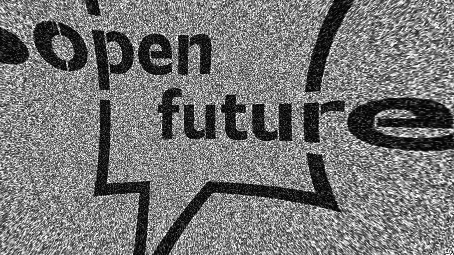 Open Future is the name of an initiative to remake the case for liberal values and policies in the 21st century, on Economist.com’s platforms.
Open Future is the name of an initiative to remake the case for liberal values and policies in the 21st century, on Economist.com’s platforms.
Silvia Federici, in “Caliban and the Witch”, clearly unveils the link between the rise of Capitalism and the conjuring of Magic:
Eradicating these [magic] practices was a necessary condition for the capitalist rationalization of work, since magic appeared as an illicit form of power and an instrument to obtain what one wanted without work, that is, a refusal of work in action … Equally incompatible with the capitalist work-discipline was the conception of the cosmos that attributed special powers to the individual: the magnetic look, the power to make oneself invisible, to leave one’s body, to chain the will of others by magical incantations … The incompatibility of magic with the capitalist work-discipline and the requirement of social control is one of the reasons why a campaign of terror was launched against it by the State.
Under capitalism not only did the economic system change, but also, as Federico Campagna claims in his book “Technic and Magic”, the very composition of the world. Metaphysically, we shifted from a Magic to a Technic reality system. The Technic reality system doesn’t allow magic to be possible anymore, nor fate to exist. The future needs to be “open” and “separated”. Yet, in both systems the same feeling of disempowerment remains; either for a future that is too fixed, or too open, as Campagna argues:
Facing the disintegration of reality produced by Technic, its destruction of any possibility of autonomous presence, its reduction of world and self, subject and object, to an empty and paralyzed whole - facing all this, a contemporary person finds him/herself in a position that uncannily resembles that which was common to archaic/primitive people of magic societies. Both their realities, their worlds and their presences are under constant threat of merging into one same nothingness. Both a person living today under the regime of Technic, and one living in an archaic magic society, have to fight to reconstruct a reality and a presence for themselves and for the world.
In fact, the open future is just an illusion. It is no longer an all knowing God that determines our future, but societal, economic, political norms that form a new system, a world already built.
VII. EXTERNAL FORCES
It describes what the surrounding of the querent holds. How the people around the querent perceive the situation, but also what obstacle the querent may face.
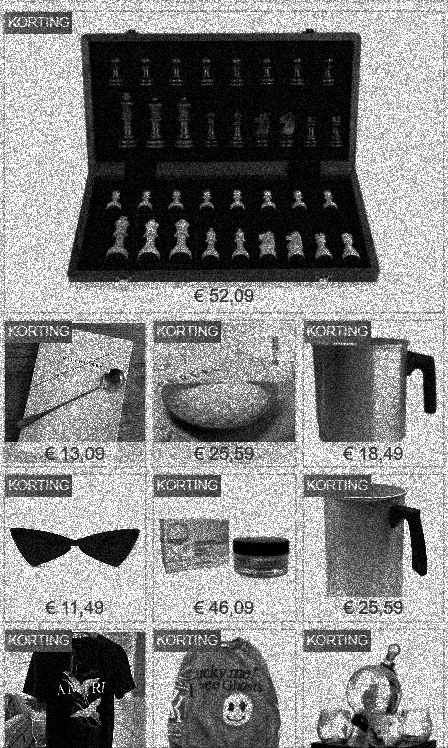 My personal pop-up advertising found on Google's search homepage.
My personal pop-up advertising found on Google's search homepage.
Finance, money, systems of prediction.
Looking at these terms, they don’t feel as arcane as magic, spell, prophecy. Yet we are, as before, engaging with a magic system, only co-ordinated by new agents. Elena Esposito, in her lecture “Future and uncertainty in the digital society” raises important questions on how algorithms would have substituted gods and spirits in the shift from fate to future:
The attitude around big data is not so new. It seems that algorithmic predictions revive an ancient divinatory attitude. From Mesopotamia to the Chinese world. The idea was that in ancient times the future appeared to be unknowable to humans, but not to divinity, not to God. As of today, the future appears to be unknowable to humans but not to the algorithms.
Predictive analytics, algorithms, artificial intelligence (AI) have taken up the post of divination tools to fit in a cosmos that is digitally regulated. We thought the open future would allow us to make up our own destiny, but algorithmic predictions are actually depriving the future of its open possibilities. The cells and atoms of modern predictions’ organism are Data; provided by human behaviors, machines, services. Since they work on past information, it should be technically impossible that these pieces of information would uncover secrets and claims about the future. But, even if algorithms cannot foresee futures, as divinatory tools claim to do, they can manufacture them.
In 2013 Cambridge Analytica data scandal broke the crystal bowl around those who decide which future gets imposed over others. The company harvested data from 87 million profiles on Facebook without their consent through an app called This is your digital life, created by Aleksandr Kogan. If around 2013 one of your Facebook friends took the personality quiz on this app, it most certainly also took your information to create targeted advertising regarding the presidential elections, amongst other things. “A small number of people who logged into This Is Your Digital Life also shared their own news feed, timeline, posts and messages, which may have included posts and messages from you,” the company told affected users. The locations of users were also used to create psychographic profiles, to advertise a particular location, where a political event was taking place. Theorist Eshun Kodwo, on “Further Considerations on Afrofuturism” states:
It is clear that power now operates predictively as much as retrospectively. Capital continues to function through the dissimulation of the imperial archive, as it has done throughout the last century. Today, however, power also functions through the envisioning, management, and delivery of reliable futures.[...] The powerful employ futurists and draw power from the futures they endorse, thereby condemning the disempowered to live in the past.
The threat of reliability is ending up in a past cul-de-sac that doesn’t provide alternatives, nor the possibility to imagine something that hasn’t happened yet.
 Cambridge Analytica banner before it shut down in 2018, found on Venturebeat.com
Cambridge Analytica banner before it shut down in 2018, found on Venturebeat.com
What Esposito, again brilliantly exposes is:
In Oedipus, it shows that divinatory responses are often self-fulfilling, unavoidable. Because the future already exists in the present. But in the open future, this circularity means inability to learn and wrong loops. They only see the reality that comes from their interventions, so they cannot work with what they cannot see.
The patterns algorithms use to determine what will happen hold some criticality. By supposing that gathered Data is neutral and above all consequential, it means that the future already exists and can only be generated by the past. The risk is perpetuating our worst traits, not buying chocolate bars three days in a row, but more preoccupying reproducing racism, classism, sexism, ableism and other structures of oppression.
One of the biggest threats is predictive policing, which leans on the neutrality of algorithms and AI to prove its validity but is inherently flawed. In the year 2020, for instance, the Netherlands has confirmed itself to be the Predictive Policing Hot Spot of Europe, generating a lot of controversy. Last year it was revealed that the Dutch Authorities were using automated algorithms in a system known as SyRI (System Risk Indication) to predict fraud. The system was criticized by the UN Special Rapporteur on poverty for using parameters that were explicitly targeted at people from low-income backgrounds and ethnic minorities. Algorithms are in no way neutral, they are biased because the humans that produce, code and activate them are biased.
VIII. HOPES, DREAMS AND FEARS
The intimate emotions of the querent, which could also manifest as hopes, dreams, fears.
The future never left its fate-like costume, now in the hands of policymakers and financial capitalists that have the means to shape it. The current raw material for crafting the future are behaviours, derived from the surveillance of users and metabolized through algorithmic prediction. Which leads one to think: how much are my behaviors already affected by it, to which extent am I able to choose for my own future?
In the book “The Age of Surveillance Capitalism”, Harvard professor emerita Shoshana Zuboff introduces the concept of the right to the future tense, and why it should be discussed as a human right. Zuboff argues: “I suggest that we now face a moment in history when the elemental right to the future tense is endangered by a panvasive digital architecture of behaviour modification owned and operated by surveillance capital”.
The digital world felt like a hidden garden at the beginning of the century, promising to connect people in ways never seen before, but it couldn’t avoid colonization. Capitalism evolved from the making of products to mass production, to managerial capitalism, to services, to financial capitalism to then claiming its ownership on the digital world as well, discovering the potential of observing and predicting behaviors. Participating in the digital ecosystem is not a choice anymore, it’s a need, and you give as much as you take from it. The protocols of Silicon Valley’s corporations like Instagram, Facebook, Google, TikTok and many others, are very similar in their mesmerizing quest to produce possible futures through algorithms. Whether it’s a future to buy, to eat, to share, to travel to, to hate. This is why the predictions made for us feel so accurate, mysteriously resonating with our life, what we think, what we desire. The sense of empowerment given by the digital plane, having access to any information, hides an intrinsic diminishment of human privacy.
Media artist and programmer Olivia McKayla Ross coined the term Data healing to describe what it means to inhabit digital structures that are created to split, use and discard what we give to them. In an interview with Bitch Media, Ross offers a way to cope with the trauma left by giving so much to exploitative corporations:
“Picking a deletion day across your profiles of unwanted information, spring cleaning your iCloud to streamline storage, changing your passwords, reading terms and conditions before giving applications access—these are small steps to be aware of how you’re operating on the internet,” Ross says. “Start using more encrypted tools in your daily life, you can contact data broker agencies and ask them to delete your information.”
Ross even proposes the rise of new figures such as digital doulas, that could help people with the effects of Data trauma. Self-organization and ritualistic practices could become key against such panvasive surveillance, in re-appropriating privacy, agency, doubt, choice.
 Camera cover slide, available for Pc, Tablet, smartphones. It is intended to prevent camera hacking, privacy breaches, defend against browser surveillance, found on Amazon.com
Camera cover slide, available for Pc, Tablet, smartphones. It is intended to prevent camera hacking, privacy breaches, defend against browser surveillance, found on Amazon.com
IX. THE OUTCOME
It doesn’t indicate the answer to the situation, but more the tools to be used in order to sort it out; it is also called The Resolution.
 “Please tell us why you hid this ad”, screenshot from the “Hide Ad” button on Instagram.
“Please tell us why you hid this ad”, screenshot from the “Hide Ad” button on Instagram.
The experiences around me –– my father consulting the I Ching, my mother’s catholic occultism –– have brought me to studying and understanding the social and political causes of something as old (yet, ever-present) as the concept of magic. They made me wonder, as in my grandmother’s tank, to what extent my future was constrained and what tools could have helped me in changing that condition. In other words, how magic could become a liberation tool also for me under the systems that were oppressing my future, especially being a member of Gen-Z, and giving so much of myself to the digital world. Like messengers of higher forces, algorithms deliver me certain images, newspaper titles, advertising of prophetic significance. They tell the story of what I have to attain in order to have a future, even if I don’t perceive them that way. Flavia Dzodan, on the similarity between algorithms and cartomancy as being both predictive systems, underlines their similarities:
Our algorithms, the entirety of the systems that form the backbone of our technologies and cultures operate on these pseudoscientific paradigms. And this is why I consider algorithms to be a form of esoterica, not different from cartomancy, astrology or prediction by sacred geometry.
In all cases, all these technologies not only share a common origin as part of both institutions and individuals who pursued them vis a vis their interest in occultism but also because algorithms are generally viewed as infallible oracles that predict outcomes based on operations that remain inaccessible to the untrained eye.
Dzodan suggests that modern predictive systems are just as pseudo-scientific as astrology and divination, but being backed up by institutionalized power, they are easier to believe in. Though, there are also some crucial differences: whilst algorithms operate within the fixed capitalist future, witchcraft and magic were raised to resist and live within boundaries set by power structures.
Magic has a way of re-ordering oppressed realities, making its way through them by its own rules. The witch, the archetypal magic practitioner, also represents political rebellion from many points of view. From refusing to put the body to work, to honoring female knowledge, to hexing oppressors.
My proposition is to reclaim these tools and the witch’s archetype to navigate the modern systems of oppression operated by Surveillance Capital, and in turn, reclaim the right to the future. Tracing back to the history of Tarots and the way they served in claiming agency over a fated reality, the practice of Digital Esoterism is to use the infinite flow of images, videos, memes, numbers, advertising that our algorithms generate on our smartphones as modern Tarot cards, to talk about one’s self and one’s future. As Kenric McDowell states in the Schemas of Uncertainty symposium in which Dzodan also appears, “Seeing symbolic and predictive systems as potent, empowered, extensions of mind into matter brings a gravity and sense of responsibility to one’s work.” Interpreting and decoding the symbology of targeted ads, suggested posts may not break algorithmic governance, but it could create a new way of accepting them in our life, by seeing them as new important projections of ourselves.
Tarots, as we saw in the chapter Il Tarocco, teach to make meaning out of the world through signs that present themselves before one’s eyes. They teach about pattern recognition and communication with the unconscious. They need to be actively sought and challenged, and not passively received. They offer tools to actually imagine other narrations of futures. Investigating the results of modern predictive systems through the eyes of Tarots would mean automatically rejecting their totalizing claims over the shared and individual future, to finally build a net of new meanings.
The language and intention of magic, along with the proper ingredients could generate a real change in the relationship with digital tools. Instead of herbs and lotion, using privacy settings, Cloud cleaning, ad-blockers as ingredients. Instead of spells to ward off the evil eye, spells to ward off facial recognition. Instead of burning candles for unrequited love, burning candles for protection against trolls and viruses. When reality can only be imagined through productivity, profit, growth; use magic to resist and forge new languages to describe the world.
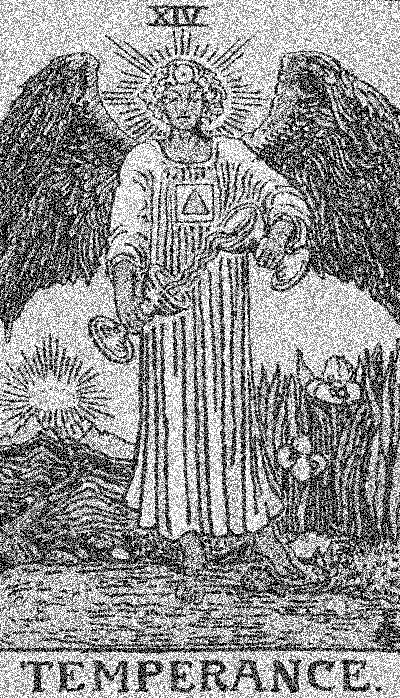 An Urban Outfitter ad from Instagram Stories and the Temperance card from the Rider-Waite deck.
An Urban Outfitter ad from Instagram Stories and the Temperance card from the Rider-Waite deck.
X. THE QUERENT
It indicates the condition or the emotions in which the querent will find themselves.
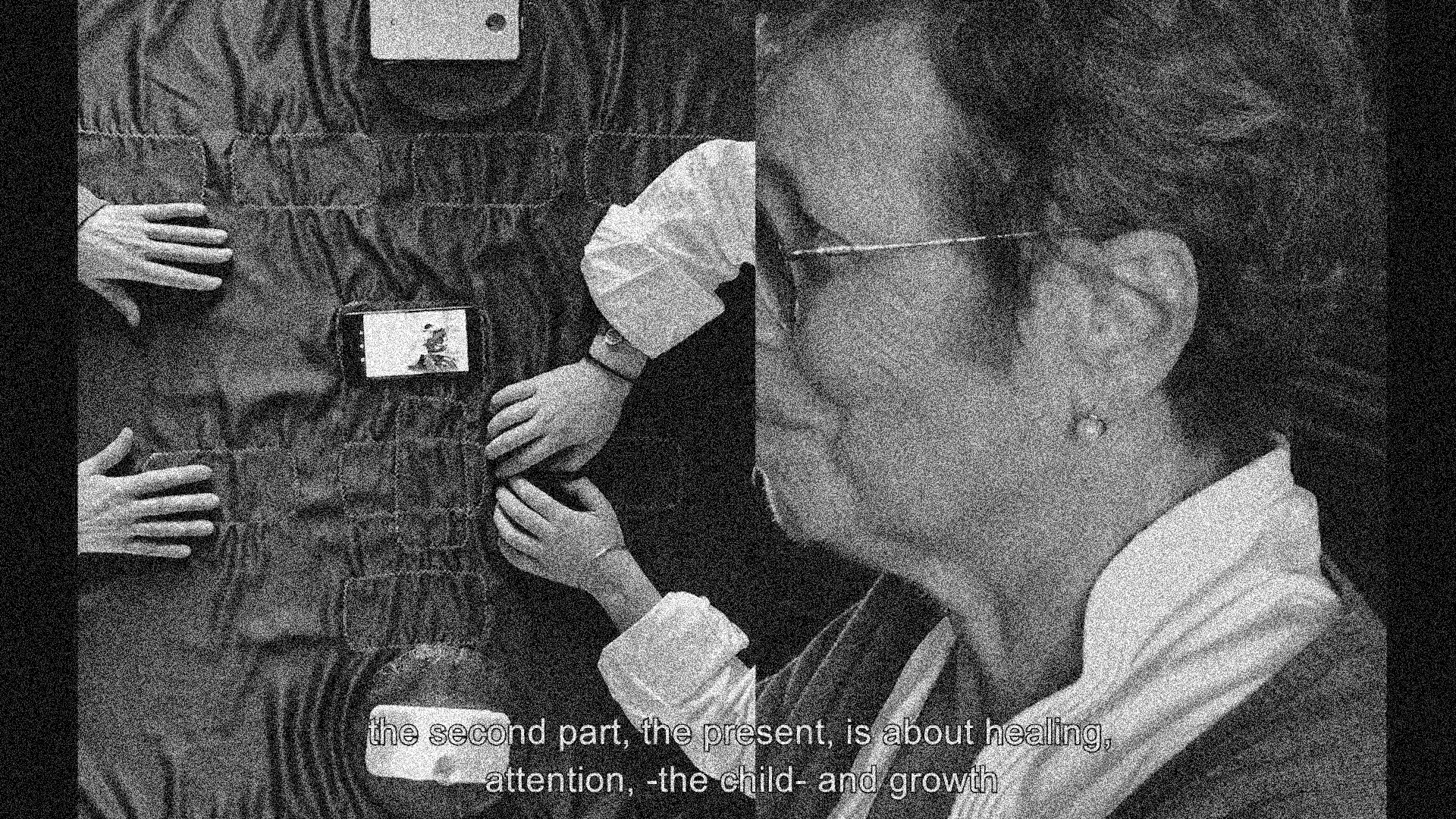 The documentation of a digital reading, February 2021. Link to video
The documentation of a digital reading, February 2021. Link to video
Usually, this position would be analyzed right before External forces. It assesses the feelings and emotions of the querent, it could also be named Internal forces. In this case, I decided to place it at the end, both to fixate how I feel at the end of this research, but also to let you, reader, decide how you feel. As mentioned in What would you like to ask? Tarots told me that I had to make them into something new if I really wanted to use them in my project. Their message was nothing but my own fear of trivializing this practice. At the beginning of my research, without knowing where I was going I started studying each and every card and read to myself and to people who wished to. I had many readings only using Tarots that generated beautiful conversations, expanded and at times clarified questions. I chose to speak about the future and the digital plane, as something that we inhabit very un-magically. By starting to read algorithmic predictions I realized how I never had the chance to discuss what my algorithm proposes to me, and it has become an unconscious practice, to stop and reflect on those images. To think through the language of magic.
Digital Esoterism or To be a Witch in the Age of Surveillance Capitalism
Thesis Tutor: Nicholas Korody.
Ginevra Petrozzi was born in Italy in 1997 and currently lives and works in The Netherlands. She received her MA in Social Design from Design Academy Eindhoven in 2021.
Her work focuses on infiltrating systems of control and refashioning folk ancestral knowledge, to create new hybrid rituals for the contemporary era. Currently, she is exploring the possibilities of mysticism and the occult within the landscape of contemporary techno-politics. In this framework, she took the role of a “digital witch”, reclaiming the archetypal role of the sorceress as a healer, and as a political rebel.
REFERENCE LIST
Books:
Blau, Didier. The Art of Divination: Practices from around the World. Old Saybrook, CT: Konecky & Konecky, 2003.
Berardi, Franco. The Soul at Work: From Alienation to Autonomy. Semiotext(e) Foreign Agents Series.Los Angeles, CA: Semiotext(e), 2009.
Berardi, Franco. Futurabilità. Roma: Nero, 2018.
Bridle, James. New Dark Age: Technology, Knowledge and the End of the Future. London; Brooklyn, NY: Verso, 2018.
Campagna, Federico. Technic and Magic: The Reconstruction of Reality. London: Bloomsbury, 2018.
De Martino, Ernesto, Cesare Cases, and Gino Satta. Il Mondo magico: prolegomeni a una storia del magismo. Torino: Bollati Boringhieri, 2019.
Federici, Silvia Beatriz. Caliban and the Witch. 2., rev. Ed. New York, NY: Autonomedia, 2014.
Federici, Silvia, and Étienne Dobenesque. Le capitalisme patriarcal. La Fabrique, 2019.
Ferrari, Fabrizio M. Ernesto de Martino on Religion: The Crisis and the Presence. Key Thinkers in the Study of Religion. Sheffield ; Oakville, CT: Equinox Pub, 2012.
Fisher, Mark, and Valerio Mattioli. Realismo capitalista. Roma: NERO, 2018.
Harney, Stefano, and Valentina Desideri. “Fate Work: A Conversation.” Ephemera Journal 13(1): 159-176 (October 13, 2018).
Rosa, Hartmut, and Jonathan Trejo-Mathys. Social Acceleration: A New Theory of Modernity. Paperback ed. ‘New Directions for Critical Theory’. New York: Columbia University Press, 2015.
Smith, Scott, and Madeline Ashby. How to Future: Leading and Sense-Making in an Age of Hyperchange. London ; New York, NY: Kogan Page Inspire, 2020.
Sollée Kristen J. and Coz Conover. Witches, Sluts, Feminists: Conjuring the Sex Positive. Berkeley: ThreeL Media. 2017.
Taleb, Nassim Nicholas, and Nassim Nicholas Taleb. The Black Swan: The Impact of the Highly Improbable. Revised edition. Incerto, Nassim Nicholas Taleb[...]. London: Penguin Books, 2010.
Zuboff, Shoshana. The Age of Surveillance Capitalism: The Fight for a Human Future at the New Frontier of Power. First edition. New York: PublicAffairs, 2019.
Articles:
Addae, Yaa. “The Internet Inflicts Violence. Cyber Doulas Are Fixing It.” in Bitch Media. Accessed February 16, 2021. https://www.bitchmedia.org/article/ digital-doulas-fixing-data-trauma.
Anderson, Chris. “The End of Theory: The Data Deluge Makes the Scientific Method Obsolete.” in Wired, June 23, 2008. Accessed January 8, 2021. https://www.wired.com/2008/06/pb-theory/
Carrillo, Jésus & Godoy Vega, Francisco. “Temporalities.” L’Internationale Online, July 2014. Accessed January 8, 2021. https://internationaleonline.org/glossary/historicisation/102_temporalities
Choi, Jong An, Minkyung Koo, Incheol Choi, and Seigyoung Auh. “Need for Cognitive Closure and Information Search Strategy.” in Psychology and Marketing 25, no. 11 (2008): 1027–42. https://doi. org/10.1002/mar.20253
Jain, Anab. “Calling for a More-Than-Human Politics.” in Medium, February 19, 2020. Accessed: November 25, 2020. https://medium.com/@anabjain/calling-for-a-more-than-human-politics-f558b57983e6
Feher, Michel. “Self-Appreciation; or, The Aspirations of Human Capital.” Public Culture 21, no. 1; January 1, 2009: 21–41.
Foucault, Michel. Dits et écrits 1984, “Des espaces autres”(conférence au Cercle d’études architecturales, 14 mars 1967), in Architecture, Mouvement, Continuité, n°5, octobre 1984.
Geiger, Gabriel. “The Netherlands Is Becoming a Predictive Policing Hot Spot” in Vice Motherboard. October, 19, 2020. Accessed February 14, 2021. https://www.vice.com/en/article/5dpmdd/the-netherlands-is-becoming-a-predictive-policing-hot-spot
Leigh, Alexander. “Why We Still Practice Superstitious Rituals With Our Technology.” in Vice Motherboard, September 4, 2016. Accessed January 11, 2021. https://www.vice.com/en/article/wnxpxm/why-we-still-practice-superstitious-rituals-with-our-technology
Lensvelt, Fiona. “A Fascinating Dive into the Art and History of Tarot.” in WePresent. Accessed January 10, 2021. https://wepresent.wetransfer.com/story/the-art-of-the-tarot/
Minton Beddoes, Zanny. “Open Future Explained-A Letter to Readers from the Editor.” The Economist, https://www.economist.com/open-future/2018/04/16/a-letter-to-readers-from-the-editor
Naughton, John. “‘The Goal Is to Automate Us’: Welcome to the Age of Surveillance Capitalism.” the Guardian, January 20, 2019. http://www.theguardian.com/technology/2019/jan/20/shoshana-zuboff-age-of-surveillance-capitalism-google-facebook.
Rosenberg, Matthew, Nicholas Confessore, and Carole Cadwalladr. “How Trump Consultants Exploited the Facebook Data of Millions.” The New York Times, March 17, 2018, sec. U.S. https://www.nytimes.com/2018/03/17/us/politics/cambridge-analytica-trump-campaign.html.
Silverman, Jacob. “How Tech Companies Manipulate Our Personal Data (Published 2019).” in ‘The New York Times’, January 18, 2019. https://www.nytimes.com/2019/01/18/books/review/shoshana-zuboff-age-of-surveillance-capitalism.html
Sosteric, Mike. “A Sociology of Tarot.” Canadian Journal of Sociology 39, no. 3 (July 7, 2014): 357–92. https://doi.org/10.29173/cjs20000
Stengers, Isabelle. “Reclaiming Animism.” in e-flux Journal #36 - July 2012. Accessed January 10 2021, https://www.e-flux.com/journal/36/61245/reclaiming-animism/
Timofeeva, Oxana. “What Lenin Teaches Us About Witchcraft.” in e-flux Journal #100 - May 2019
Accessed January 10, 2021. https://www.e-flux.com/journal/100/268602/what-lenin-teaches-us-about-witchcraft/
The homebrew witch. Mystic Mysteries. “Tarot and Cultural Appropriation.” Accessed January 10 2021 https://www.mysticmysteriesllc.com/blog/tarot-cultural-appropriation.
Others:
“L’Internationale - Glossary of Common Knowledge.”Accessed February 20, 2021. https://www.internationaleonline.org/glossary/ (WEBSITE)
Flavia Dzodan, Algorithm as Cartomancy, in conversation for the format Schemas of Uncertainty, Amsterdam: Sandberg Instituut 2018. (LECTURE)
Rosamond, Emily. The Future-Oracular: Prediction, Divination and the Politics of Certainty, in conversation for the format Schemas of Uncertainty, Amsterdam: Sandberg Instituut 2018. (LECTURE)
Royal Academy of Art (KABK). “Online Studium Generale lecture - Johanna Hedva.” Accessed February 18, 2021. https://www.kabk.nl/en/events/online-studium-generale-lecture-johanna-hedva.

